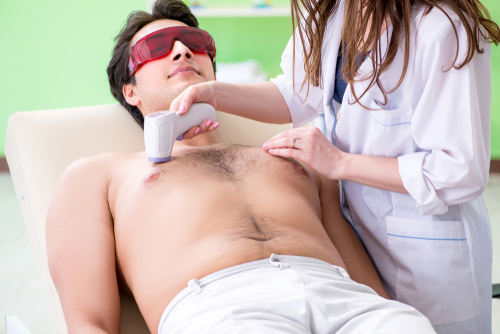Pigment within the skin is called melanin, and is produced by cells called melanocytes. These cells are stimulated to produce melanin by external stimulation, with the most common stimulant being sun exposure.
Elevated melanin production in isolated areas of the skin can be caused by hormone fluctuations, traumatic scarring, and medications, such as oral contraceptives and antibiotics, that sensitize the skin to sun exposure. However, skin injuries, chronic inflammation, and excessive and prolonged sun exposure can cause abnormal levels of skin pigmentation.
One of the common hormone fluctuations that causes hyperpigmentation is pregnancy. This pigmentation is often referred to as the "mask of pregnancy," and can show up as dark patchy areas on the face and neck. The spike in hormones during pregnancy combined with sun exposure abnormally sensitizes melanocytes to overproduce.
Another common type of pigmentation excess is called post-inflammatory hyperpigmentation, or PIH. Inflammatory skin conditions, including acne and associated scarring, can trigger melanin production and then result in the concentrated of pigment in the damaged tissue. Unfortunately for many, even though the acne lesions may be present for a short period of time, the pigmented scar can last for years.
Of course, sun exposure is the primary driver of hyperpigmentation as we get older. This is why the spots that develop over time are commonly referred to as "age spots".
These age spots are frequently found on the most sun-exposed parts of the body. These areas include the face, hands, neck, arms, and shoulders.
Unfortunately, many of the topical agents and chemical peels treat only the most superficial aspects of excess pigmentation. However, laser technologies can reduce pigmentation more thoroughly by targeting the melanin under the skin surface.
 The laser beams can destroy the excessively pigmented skin cells, making them darker at first, and then enhancing their faster exfoliation. Over a series of laser treatments, the layers of pigmentation can be removed incrementally with minimal downtime after each session.
The laser beams can destroy the excessively pigmented skin cells, making them darker at first, and then enhancing their faster exfoliation. Over a series of laser treatments, the layers of pigmentation can be removed incrementally with minimal downtime after each session.
There is usually some redness and swelling at the site of treatment right after the session, which can be easily controlled with cool compresses. The treated dark spot is then noticeably darker for the next 3-4 days; then the gradual exfoliation of pigmented cells occurs.
After the hyperpigmentation (whatever its cause) lightens, the emphasis then is on prevention. Sunscreen is paramount to protect this improvement.
You have invested in the spot removal, so you need prevent future damage. Especially with the summer months ahead, your fashion statements should be daily sunscreen, UV protective clothing, and wide brimmed hats.
If you have pigmentation issues that you would like to have addressed, call either our office in Scarborough at (207) 303-0125, or in Augusta at (207) 873-2158. You can schedule a free and confidential consultation with us to see exactly how we can help.

